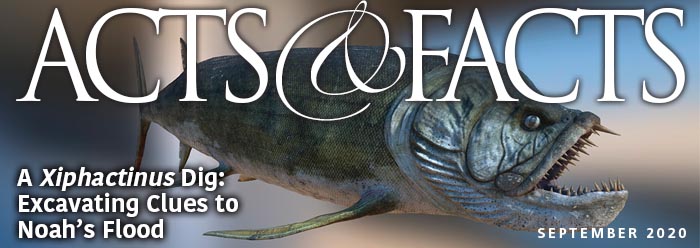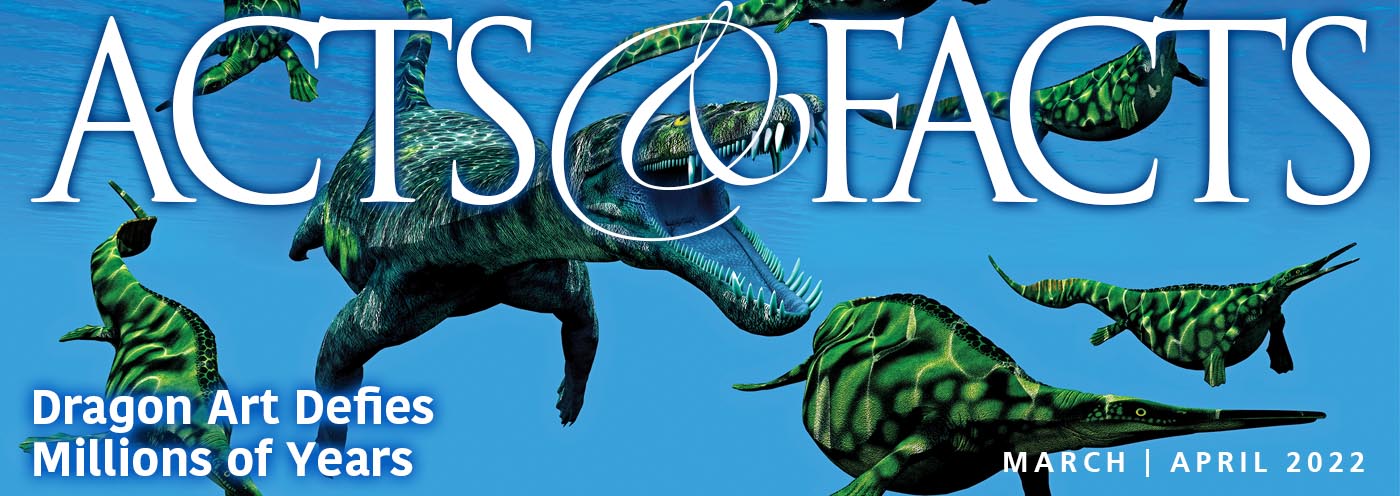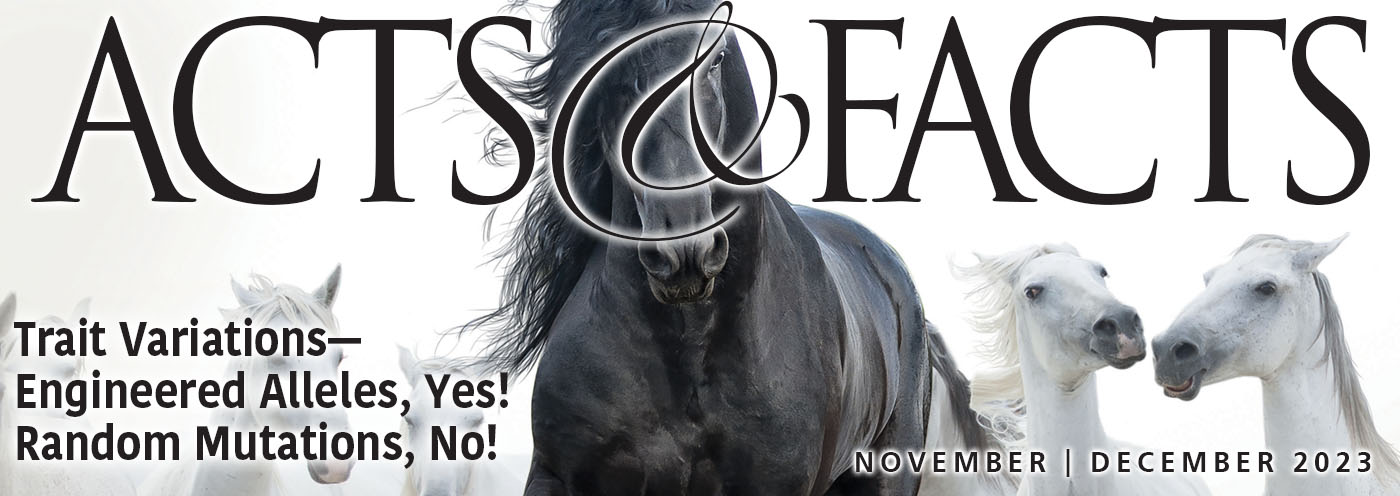A new species of iguana was recently discovered in central parts of Fiji. Named Brachylophus bulabula, it is the third iguana species that has been found in the Pacific islands. The find also presents a mystery—specifically, how did these reptiles get there? Scott Keogh of the Australian National University, the lead author of a study on the new species, said, “The distinctive Fijian iguanas are famous for their beauty and also their unusual occurrence in the middle of the Pacific Ocean because all of their closest relatives are in the Americas.”1 His work is slated to publish in October.2
There are at least three possible solutions to this mystery. First, the iguanas could have been carried to the islands by people (and if so, then it was most likely done on purpose).3 Second, the iguanas might have migrated on foot from one island in the archipelago to the next, back when sea levels were much lower during the post-Flood ice age.4 Or third, the lizards could have floated there on vegetation mats.
Evolutionary scientists have chosen the latter option: “Ancestors of the Pacific iguanas may have arrived up to 13 million years ago after making a 5,000 mile rafting trip from the New World.”1 Presumably, early pre-human ape-like creatures were not capable of sailing, let alone transporting live animals. But how credible is a 5,000 mile rafting trip, when the only “rafts” available would have been made of loose South American forest debris? And this occurred at least three times, once for each species.
Since there are no records of the iguanas’ arrival, and since circumstantial evidence is sparse, the exact way that iguanas got to Fiji may always remain a mystery. However, while evolutionary thinking limits itself to the fortunate float theory, creation thinking permits additional possibilities, including that the earliest men were sailors, able to transport items, or animals, of interest. There is even archaeological evidence that ancient men were world travelers5—and why wouldn’t they have been, since Noah’s descendants had master shipbuilders for reference?
One canard raised against creationism concerns “the geographical distribution of organisms on our planet (if species were created, why did the creator fail to stock oceanic islands with mammals, freshwater fish and reptiles?).”6 However, creation and placement are entirely different processes. Although Bible supporters of a century or so ago may have believed otherwise, modern creation scientists do not insist that the Creator must have been the “placer.”7 Whereas God divinely created the first iguanas, He also divinely orchestrated natural circumstances to oversee their dispersal throughout the globe.
While the evolutionary explanation strains credulity, the presence of American iguanas on Fiji is not nearly as mysterious when one begins with biblical history.
References
- Scientists Discover a New Pacific Iguana and More Clues to a Longtime Mystery. U.S. Geological Survey press release, September 18, 2008.
- Keogh, J. S. et al. 2008. Molecular and morphological analysis of the critically endangered Fijian iguanas reveals cryptic diversity and a complex biogeographic history. Philosophical Transactions of the Royal Society B: Biological Sciences. 363 (1508): 3413-3426.
- Woodmorappe, J. 1993. Studies in Creationism and Flood Geology. Acts & Facts. 22 (4).
- Oard, M. 1987. The Ice Age and the Genesis Flood. Acts & Facts. 16 (6).
- Hancock, G. 1998. Heaven’s Mirror. London: Michael Joseph/Penguin.
- Coyne, J. A paleontologist makes the case for evolution and against creationism. Chicago Tribune, July 30, 2000, Sunday Books, page 4. This article reviewed The Triumph of Evolution by Niles Eldredge.
- Even if God did populate the entire earth during the creation week, the subsequent global Flood would have still resulted in the dispersal of land animals from a single point.
Photograph by Paddy Ryan/Ryan Photographic
* Mr. Thomas is Science Writer.
Article posted on September 30, 2008.
















